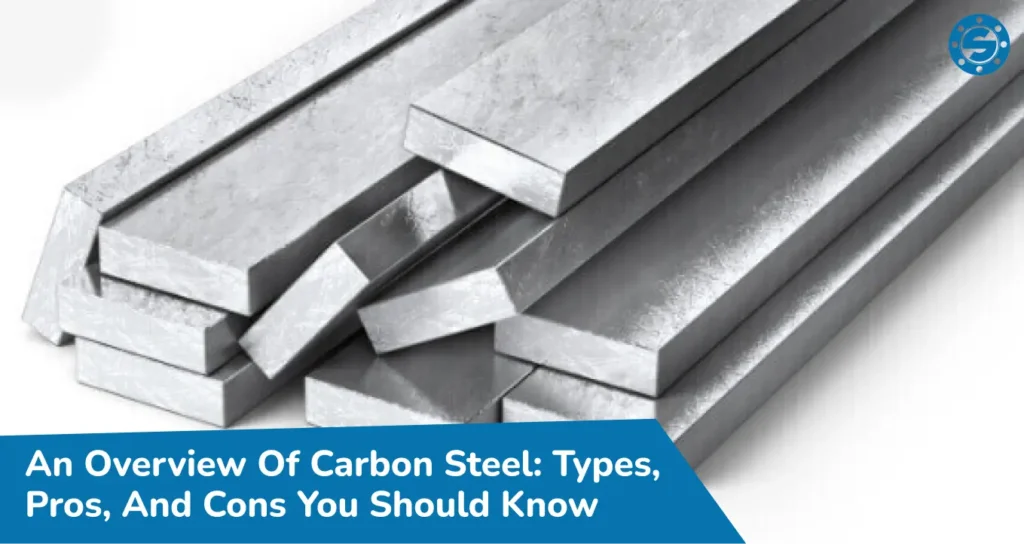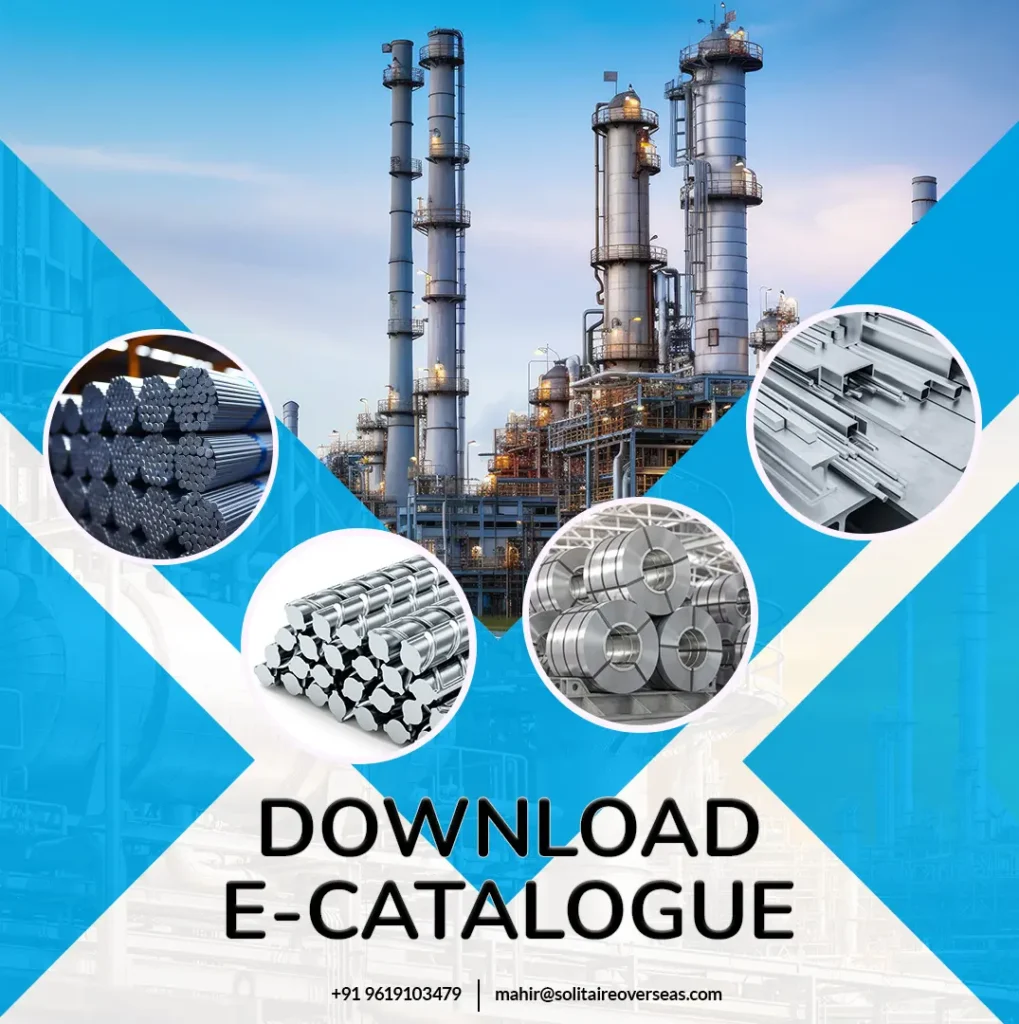An Overview Of Carbon Steel: Types, Pros, And Cons You Should Know

What is Carbon Steel?
Carbon steel is a type of steel with a carbon content between 0.05% and 2.10% by weight. It is primarily made of iron and carbon, with very few alloying elements. According to the American Iron and Steel Institute (AISI), carbon steel has the following characteristics:
- No minimum requirement for elements like chromium, nickel, or molybdenum that are often used in other alloys.
- Copper content must be below 0.40%.
- Manganese, silicon, and copper must stay within certain limits: manganese below 1.65%, silicon below 0.60%, and copper below 0.60%.
Carbon steel is simple and versatile. As the carbon content increases, the steel becomes stronger and harder but also less ductile and more difficult to weld. The higher carbon content also lowers the steel’s melting point. In some cases, carbon steel may refer to non-stainless steels, which could include low-alloy steels with specific alloying elements for specialized applications.
Types And Properties of Carbon Steel
| Type | Carbon content (%) | Microstructure | Properties | Examples |
|---|---|---|---|---|
| Low-carbon steel | 0.05 – 0.25 | Ferrite, pearlite | Low hardness and cost. High ductility, toughness, machinability and weldability | AISI 304, ASTM A815, AISI 316L |
| Medium-carbon steel | 0.30 – 0.50 | Martensite | Low hardenability, medium strength, ductility and toughness | AISI 409, ASTM A29, SCM435 |
| High-carbon steel | 0.60 – 1.00 | Pearlite | High hardness, strength, low ductility | AISI 440C, EN 10088-3 |
Low-Carbon Steel
Low-carbon steel, or mild steel, is the most widely used type of steel. With a carbon content of about 0.05-0.25%, it is malleable and easy to shape. Though it has lower tensile strength, it is affordable and simple to work with. Carburizing can improve its surface hardness. High-strength, low-alloy steels (HSLA) fall into this category too. They include elements like copper, nickel, and vanadium, which enhance their strength and corrosion resistance while retaining good ductility.
Medium-Carbon Steel
Medium-carbon steel contains 0.30-0.50% carbon and 0.60-1.65% manganese. It is stronger than low-carbon steel and can be hardened through heat treatment processes like quenching and tempering. This makes it ideal for parts like shafts, gears, and axles. Adding alloying elements such as chromium and molybdenum can further improve its hardenability.
High-Carbon Steel
Properties And Applications of Common Carbon Steel Grades
| Type | AISI/ASTM name | Carbon content (%) | Tensile strength (MPa) | Yield strength (MPa) | Ductility (% elongation in 50 mm) | Applications |
|---|---|---|---|---|---|---|
| Low | 1010 | 0.1 | 325 | 180 | 28 | Automobile panels, nails, wire |
| Low | 1020 | 0.2 | 380 | 205 | 25 | Pipes, structural steel, sheet steel |
| Low | A36 | 0.29 | 400 | 220 | 23 | Structural |
| Low | A516 Grade 70 | 0.31 | 485 | 260 | 21 | Low-temperature pressure vessels |
| Medium | 1030 | 0.27 – 0.34 | 460 | 325 | 12 | Machinery parts, gears, shifts, axles, bolts |
| Medium | 1040 | 0.37 – 0.44 | 620 | 415 | 25 | Crankshafts, couplings, cold headed parts. |
| High | 1080 | 0.75 – 0.88 | 924 | 440 | 12 | Music wire |
| High | 1095 | 0.90 – 1.04 | 665 | 380 | 10 | Springs, cutting tools |
Typical Carbon Steel Products
Construction Structure Steels
These steels, with intermediate to high carbon levels and additional alloying elements, are known for their strength and formability. They are used in a wide range of structural applications worldwide, from building frameworks to engineering projects. For instance, Mild steel offers structural steels like S355, which has a minimum yield strength of 355 N/mm².
Petrochemical Wells
Shipbuilding
Pipeworks and Pressure Vessels
Carbon steel is widely used in the gas and petrochemical industries for pipes and pressure vessels. Low-carbon steel’s excellent weldability and case hardening properties make it suitable for complex shapes and harsh environments. Carburization enhances its durability by forming a hard outer layer while preserving the ductile core. Mild steel provides pressure vessel steels that meet ASME SA285 and other international standards.
Pros and Cons of Carbon Steel
Advantages of Carbon Steel
Strength and Durability: Carbon steel/ Mild Steel is known for its high strength and durability. It is stronger than many other types of steel due to the carbon content, which enhances its structural integrity.
Corrosion Resistance: Although not as resistant as stainless steel, carbon steel has decent corrosion resistance. Proper treatment and coatings can improve its resistance to rust and other forms of corrosion.
Temperature Resistance: Carbon steel performs well under both high and low temperatures, making it versatile for various applications.
Variety and Cost: It comes in many types and grades, offering flexibility for different needs. Additionally, it is relatively inexpensive and provides good value over its lifespan.
Environmental Friendliness: Carbon steel is recyclable and environmentally friendly, reducing waste and promoting sustainability.
Low Maintenance: Its requires minimal maintenance and is easy to clean. Additionally, it can be finished to achieve an attractive appearance and does not tarnish easily.
Disadvantages of Carbon Steel
Rust and Corrosion: Carbon steel is more susceptible to rust and corrosion compared to stainless steel. It lacks chromium, which protects against moisture and rust. This makes it less suitable for applications exposed to harsh environments without proper treatment.
Difficulty in Shaping: It can be challenging to bend and mold carbon steel into complex shapes due to its hardness. This can limit its use in certain applications and make it more difficult to work with.
Initial Cost and Waste: The initial cost of high-carbon steel can be high, and it can be difficult to work with, often resulting in costly waste and the need for rework.
Overall, carbon steel offers excellent strength and durability but requires careful handling and maintenance to manage its susceptibility to rust and difficulty in shaping.
Conclusion
Carbon steel is a versatile material that marries the flexibility of iron with the strength provided by carbon. It can be heat-treated to achieve various shapes and forms, while maintaining its toughness and high tensile strength. However, its surface is prone to corrosion and weathering if left untreated.
To combat these issues, carburization can be used. This process infuses carbon into the surface layer of the steel, creating a hard, wear-resistant outer shell while keeping the inner core strong and durable. This method enhances the steel’s resistance to wear and extends its lifespan by protecting it from rust and damage. Thus, carburization offers a practical solution for improving the performance and durability of carbon steel components.


